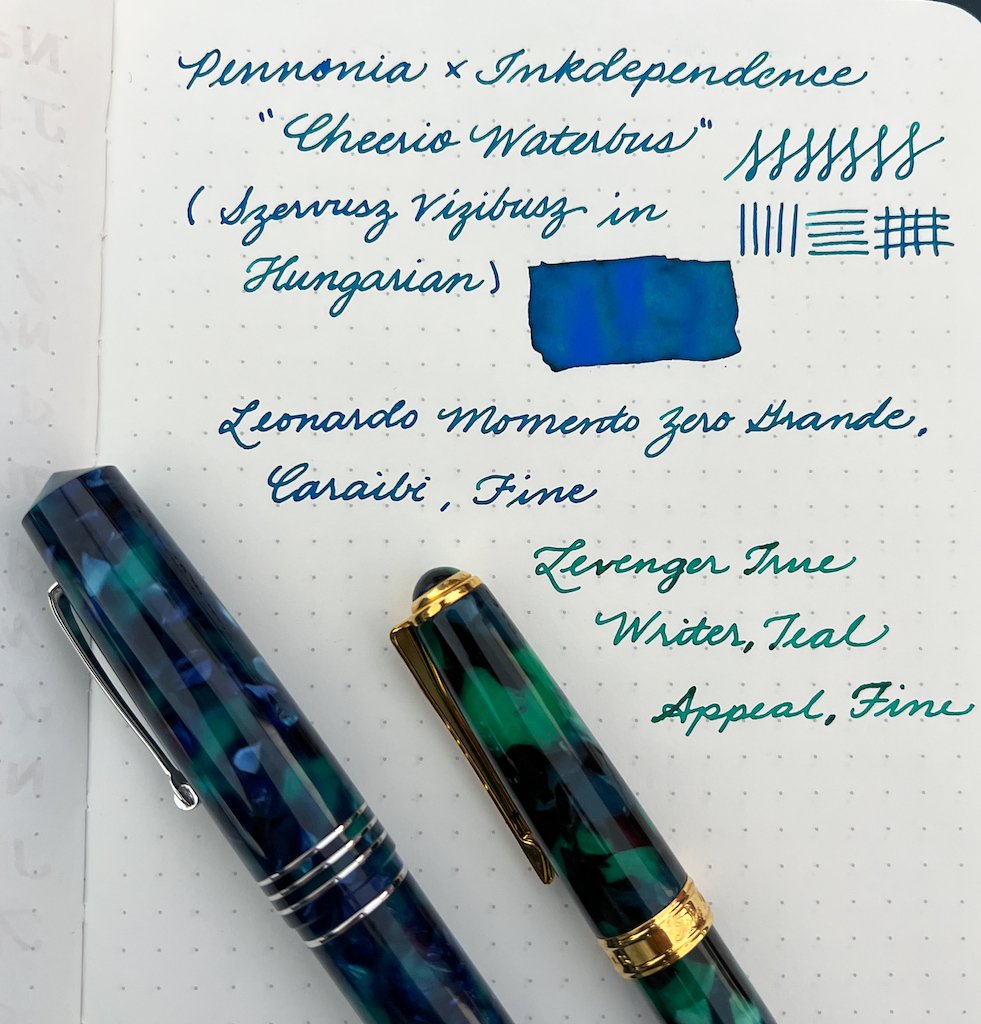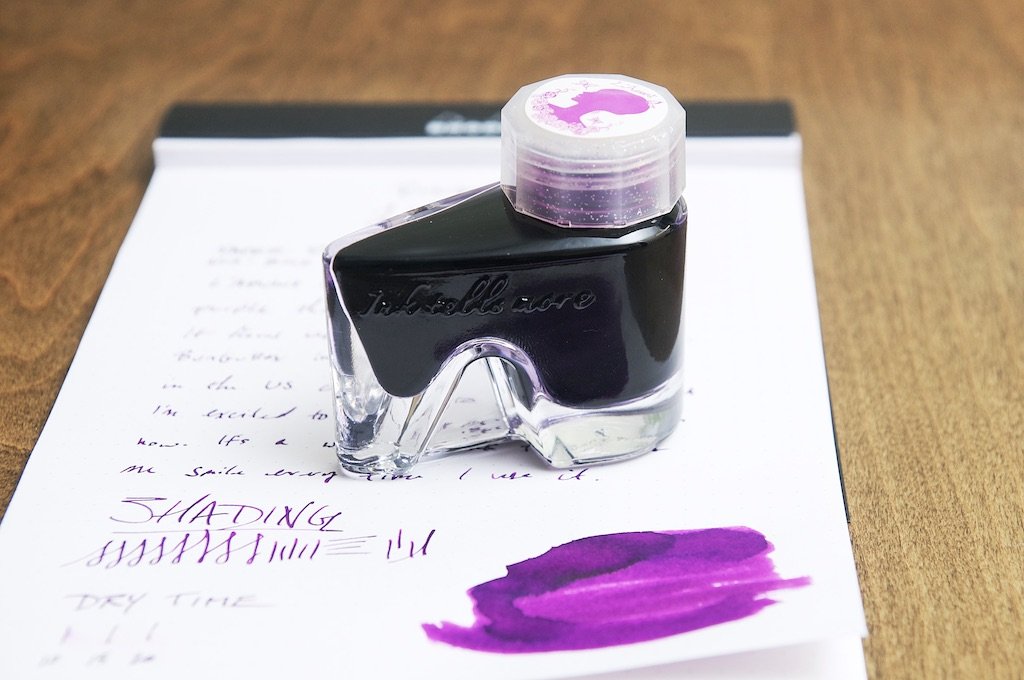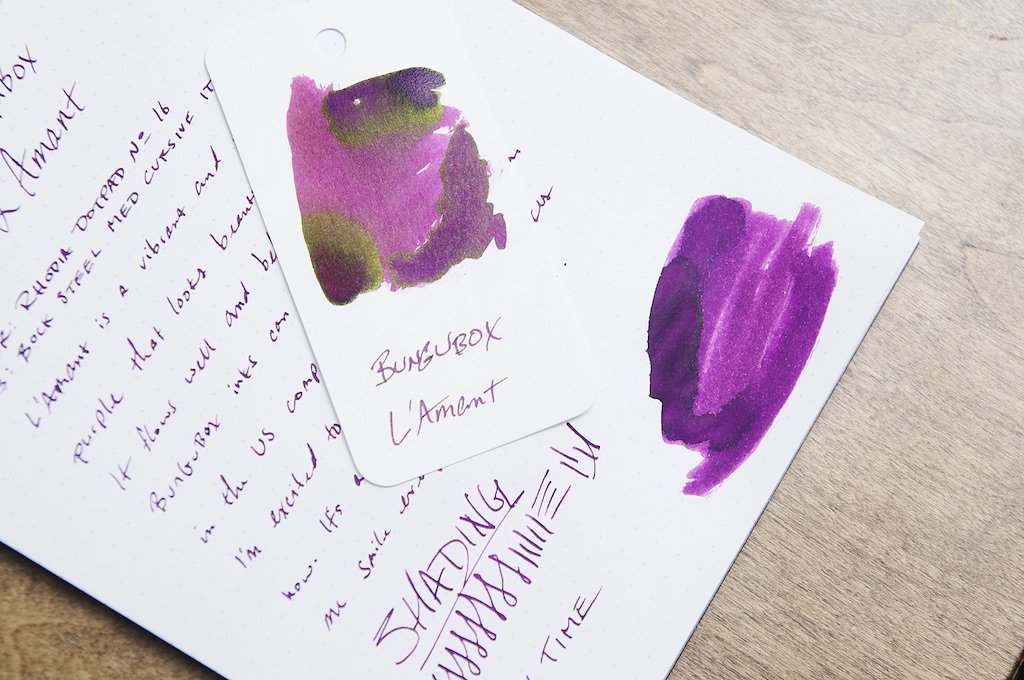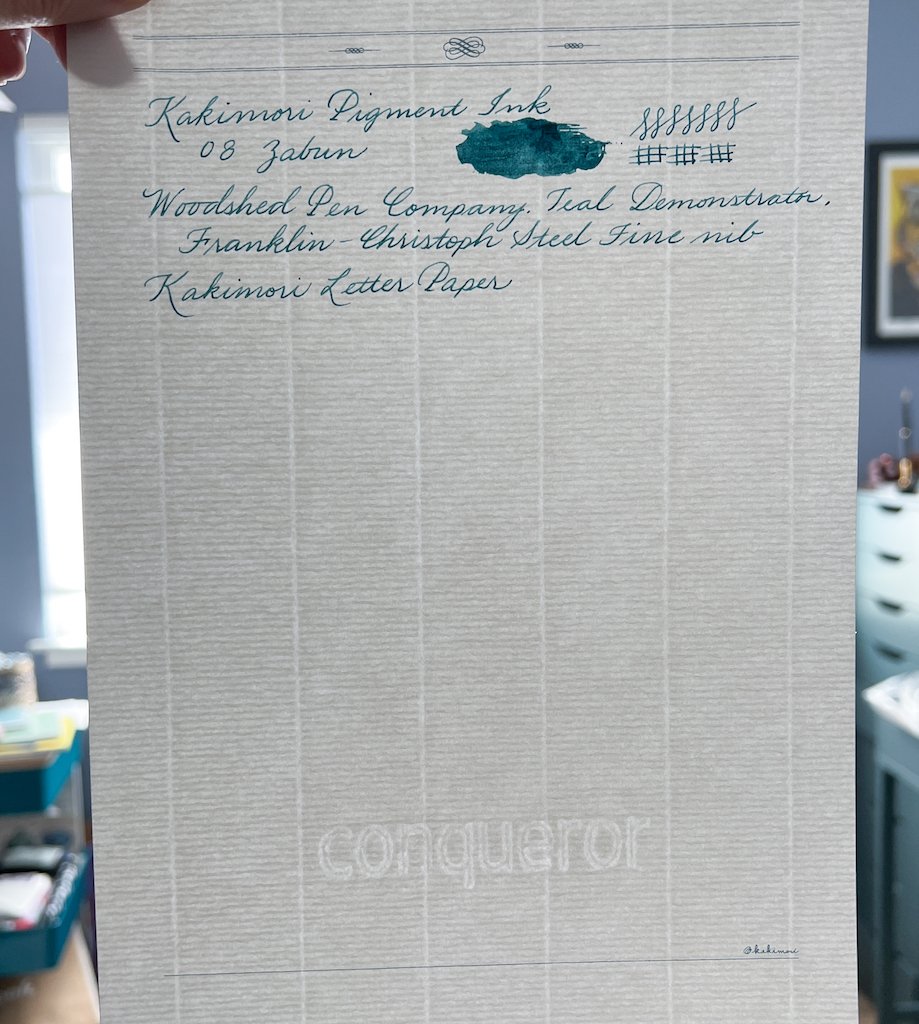(Kimberly (she/her) took the express train down the fountain pen/stationery rabbit hole and doesn't want to be rescued. She can be found on Instagram @allthehobbies because there really are many, many hobbies!.)
“See you later, Cheerio Waterbus” - what the heck, Kimberly? That doesn’t even rhyme! I know, I know! There are “goodbye phrases” that rhyme in English like “See you later, alligator” and “In a while, crocodile”, but did you know that other languages have similar rhyming sayings for “see ya”? If you check out this Twitter post by Adam Sharp, you’ll find foreign language equivalents including the Dutch’s “Aju paraplu” (“bye umbrella”) or Basque’s “Agur yogur” (“bye yogurt”), but the one that we’re talking about today is “Szervusz vízibusz” which is Hungarian for “cheerio waterbus”! Mike Matteson of Inkdependence thought that was cool and it would be a great name for his ink collaboration with Hungarian ink maker, Máté Bikfalvi of Pennonia Inks.
Released just a few weeks ago in late March, Pennonia x Inkdependence Cheerio Waterbus’ first online batch sold out on the same day and the remaining inks were gone before Saturday afternoon at the Atlanta Pen Show! I was glad I was able to pick up my ink from him at the show before they were all gone! (Don’t worry, more is coming)
Cheerio Waterbus comes in a 60ml glass bottle which is packaged in a white box with Mike’s logo on the side and a round color swatch on top (I love this so I can see what colors are in my ink drawers). The bottle also has a nice swatch on the front, Mike’s logo on the right and “Thanks for choosing Pennonia ink” in Hungarian on the left.
Don’t ignore this advice! You really need to shake it like a Polaroid picture!
There’s a reason you gotta shake the bottle. There is a layer of blue pigment at the bottom.
On Col-o-ring cards, you can see that it is a nice green-leaning teal mixed with blue pigment, which makes the ink shift colors depending on how much pigment you get when you’re writing. You can see the pops of blue in the swatches and the writing sample. I used a Kakimori brass dip nib on the swatch cards. For the other writing samples, I started out with a Leonardo Momento Zero Grande in Caraibi, which is a really great match for all the variations of green and blue that you get from Cheerio Waterbus.
Similar inks include Robert Oster Tranquility, 3 Oysters Aqua Green, Colorverse Morning Star and Robert Oster Marine. These are all just a teensy bit more blue than Cheerio Waterbus. I color-corrected this picture so the swatches would be more accurate, but it makes the Col-O-Ring cards look more yellow.
Pigmented inks can be (but aren’t always) difficult to clean and possibly stain, so I decided to unink my Leonardo Caraibi, which has a captured converter. I only had it in the pen for a day but I didn’t have any problems cleaning it out, other than constantly twisting the converter because that’s the only way to clean these kinds of pens. I switched to a Levenger True Writer, Teal Appeal, so I could use a converter and not worry about any staining (so far so good). Both have Fine European-sized nibs, but the Leonardo writes wetter due to the larger nib/feed, so I was able to see more blue in that writing sample. As with any pen inked up with a pigmented ink like Cheerio Waterbus (or with shimmer inks), you should periodically agitate it to make sure the pigment is mixed well with the dye. Tip: You can agitate a pen with pigment or shimmer by gently rocking it back and forth a few times (nib down, then up, then down, repeat), rolling it around on the table (with the cap on in case of impending gravity!), shaking it gently, or moving the converter piston up and down a few times in combination with other methods.
The wetter pen (top) got me more blue.
Just look at the green, teal and blue in that swatch!
The color shifting wasn’t as noticeable on 24lb copy paper.
The flow is average to slightly wet but it still dried fairly quickly with the Levenger on the index card. On 68 gsm Tomoe River paper, it took a bit longer, especially with the Leonardo, probably 10 seconds more.
Dry time was 25-30 seconds on this Exacompta index card (yay, I found some white ones!)
Now, I know this isn’t meant to be a waterproof or water-resistant ink but since the blue is pigmented, I was curious to see how it would behave if doused with water.
Writing on 24lb copy paper and letting it dry completely before running it under water.
Definitely not waterproof but might be readable if there was more space between the letters.
This is a great ink that flows well and is a great color with super cool blue popping in and out. Mike tells me that he will be getting the next batch in 2 more weeks, so keep an eye out on his Inkdependence IG and his store.
(I purchased this directly from Mike and picked it up at the Atlanta Pen Show.)

































